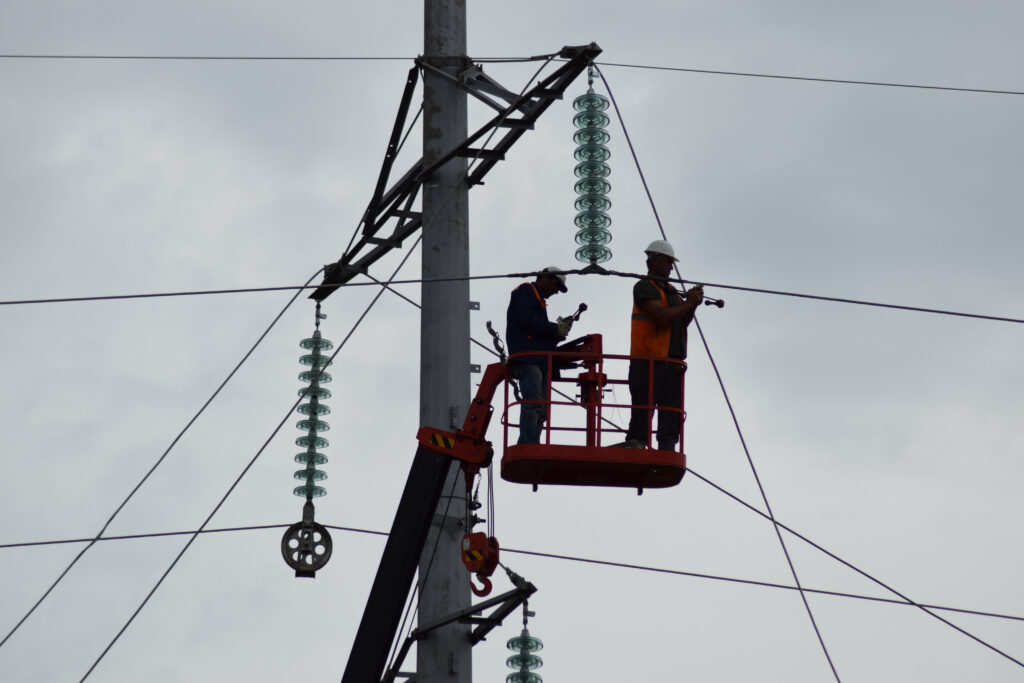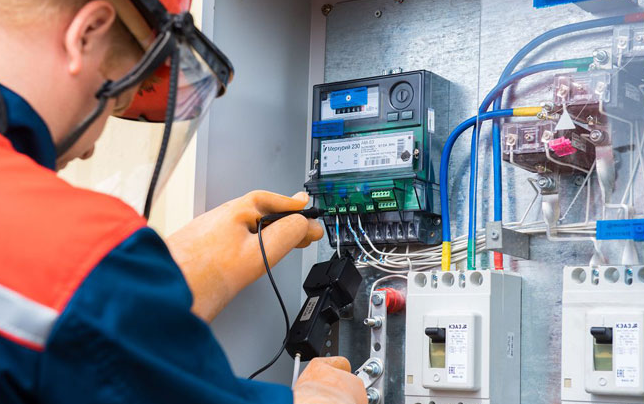Electricity is more than fundamental in our lives. On a daily basis, almost everything you do depends on electrical energy. However, if an electrician handled it incorrectly, it can become very dangerous. Statistics show that in the majority of accidents involving the power grid and the public, the victim dies.
Concerned about this, companies have been adopting actions that seek to inform and raise awareness among professionals about the risks that electricity offers and publicize the need to assume safe behavior when living with it. Through these actions, these professionals need to be prepared to identify the risks in electrical services.
HOW TO AVOID ACCIDENTS WITH ELECTRICITY
Electric power provides many benefits, but great care is always needed when dealing with it. Controlling the risks of accidents in the workplace requires that safety procedures and recommendations are adhered to.
Read carefully some tips for working safely in electrical services that help prevent accidents at work:
- Electrical installations can only be carried out and maintained by a qualified and qualified worker with the supervision of a legally qualified professional.
- Electricians must keep the work area clean. Areas and benches full of debris are an invitation to accidents.
- Electricians must read the manuals for portable power tools and the safety recommendations given by the manufacturer.
- Ground all tools that do not have double insulation. If the tool has been equipped with a three-pin plug, plug it into a three-input socket. If you are using an adapter for two socket outlets, secure the adapter wire to a known ground wire. Never remove the third pin.
- Electricians must avoid dangerous environments. Do not use power tools in damp or wet locations and keep areas well lit. When necessary, adopt insulating platforms, such as rubber mats, and check that the cable is in perfect condition, in addition to being grounded.
- Electricians Never wear jewelry, jewelry, loose clothing, or gloves that may hinder the operation. They can cling to moving parts. Wear the appropriate clothing. Wear shoes and rubber gloves when working in open areas.
- Hold the tools firmly, as there is a possibility that these tools may slip out of your hands as they work at high speed.
- Do not force the tool. It will do the job better and safer if used under the conditions for which it was designed.
- When performing any type of tool component replacement (drill, wheel, etc.) remove the plug from the power outlet.
- Make use of all PPE’s recommended by security professionals.
- Sign and isolate the work area appropriately.
- Electrical panel doors must remain closed and locked. When viewing any open and/or unlocked electrical panel door, ask for its closing and/or locking.
- Electrical panels must not be obstructed by any type of material or equipment ( racks, boxes, industrial vehicles, maintenance carts, etc.)
- Electrical panel cabinets cannot be used to store any type of material.
- They can only perform interventions on electrical panels, employees, and contractors qualified, trained, and with the EPI specific to the NR10 risks.
- When carrying out interventions on electrical panels, sign and use security padlocks and a danger card.
- The general tables must be kept locked, with their circuits identified in writing.
- Do not separate the legs from the power cord. If you accidentally cut the cable or damage the insulation in any way, do not try to repair it yourself. Deliver it for immediate replacement and/or repairs.
- Do not abuse the cable. Never carry a tool by holding the power cord, or unplug by pulling on it. Keep the cable away from sources of heat, oil, or sharp edges.
- Know your power tool. Learn its applications and limitations, as well as the potential risks associated with your operation.
REMEMBER: Electricity has no smell, no color, so it can deceive us
Work safety is a right and a duty for all of us. When talking about working with electricity, this intensifies even more: today, statistical data shows that accidents related to electrical installations are very frequent in the country.
The attitude of the professional ends up being the biggest source of electrical accidents. Therefore, it is important to know some essential practices of the electrician’s work to avoid accidents.
Pay attention to some recommendations and take steps to avoid accidents and increase your work safety. Also, get to know some safety standards for electrical professionals and become an expert in accident prevention.
Check it all out below.
Main risks of working with electricity

1. Electric shock
Certainly, one of the biggest risks that the electrician takes is that of electric shock. This happens when electrical energy finds a passage through our body and discharges it to the earth. Or, when the electrician touches two different electrical phases, which causes an electrical passage from one wire to the other.
The electric shock causes pain and burns, but it can also cause cardiac arrest and muscle contractions.
The main cause of electric shock is to work without protection, without paying attention to electrical discharge or improvising tools.
2.Electric arc
The transmission of electric current through the air, or another insulating principle, is called an electric arc or arc flash. It normally runs for short circuits or when connecting/disconnecting electrical devices.
As harmful as a direct shock, the electric arc can cause third-degree burns or even fires.
3. Burns
They can be caused by other previous accidents or by direct contact with electricity. Burns of this type are more severe than those caused by fire, as the internal injury is greater than the external one (on the skin).
In addition to the more specific safety tips, try to use boots, gloves, and appropriate clothes to avoid any type of burn.
4. Ergonomic risk
It often occurs when the electrician is unable to work in a suitable and comfortable position, leading to muscle injuries and contractures. Back pain, repetitive movements, and even stiff neck are risks of risky and inappropriate electrical work.
Main causes of electrician’s work accidents

Most electrical work accidents are caused by the electrician’s lack of attention or professional inadequacy. We can also mention other factors that cause electrical accidents, such as:
● Incorrect use or absence of PPE (personal protective equipment);
● Incorrect use of electrical devices;
● Improvisation of tools;
● Use of damaged PPE or tools;
● Lack of attention to discharge and electrical current.
So, how to change this scenario and ensure your safety in the electrical workplace?
How to be safer when working with electricity
Therefore, there is also the company’s responsibility to ensure the safety and health of electrical workers.
It is the company that will inform workers of possible risks, as well as takes steps to avoid them. This involves the use of protective equipment, functional devices, qualification, and safety training, for example.
Pay attention to the general electrician’s safety tips at work

● Determine the PPE according to the activity performed in the electrical work. This means using safety glasses, helmets, hearing protectors, gloves, clothing, and shoes suitable for each job. An electric fence installation, for example, will require almost all of these PPE, while a wiring adjustment may require only suitable gloves and shoes.
● Use your PPE whenever necessary and request a replacement of damaged PPE. Minor damage to your protective gloves can mean less security for you.
● Choose and use the right tools. Do not improvise tools for electrical work, even if simple.
● When carrying out work at a certain height, such as installing electric fences or lights on the ceiling, use wooden or fiber ladders. Aluminum is a conductor of electricity and can put the electrician’s safety at risk.
● If using ladders, make sure the electrician’s weight is well balanced and the ladder is secure. Also, pay attention to the position of the neck and back, so as not to put your posture at risk.
● Electricians must remember to de-energize all sources of electricity before making any measurements or repairs.
● Attention to voltage: Check if the voltage of the device or equipment is compatible with the voltage of the outlet. This goes for all types of installation, such as showers and extra sockets. In addition, make sure that there is no voltage from devices before performing any repair work, even if it is a lamp change or socket repair.
● Check, also, if the power of the equipment is adequate for the outlet. This prevents damage and also exposure burns. Special attention is given to the use of transformers, which suffer this type of accident when misused.
● Use cables with a minimum cross-section for the type of work. For lighting, at least 1.5 mm2 is recommended. For power circuits, 2.5mm2.
● Always follow the project. The professional responsible for it, in turn, must be aware of the safety and risk rules of the workplace.
Another article on this blog that might interests you:
